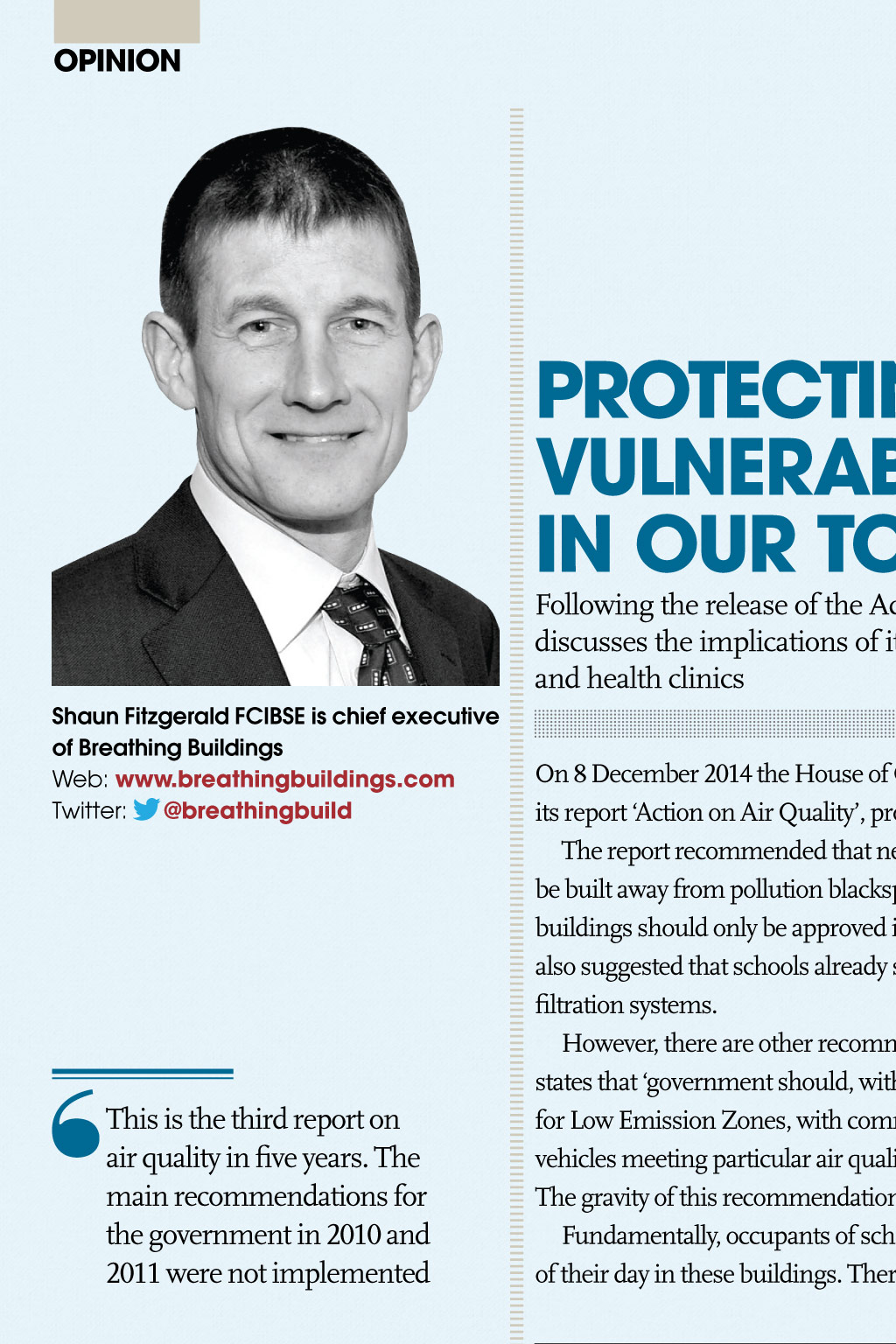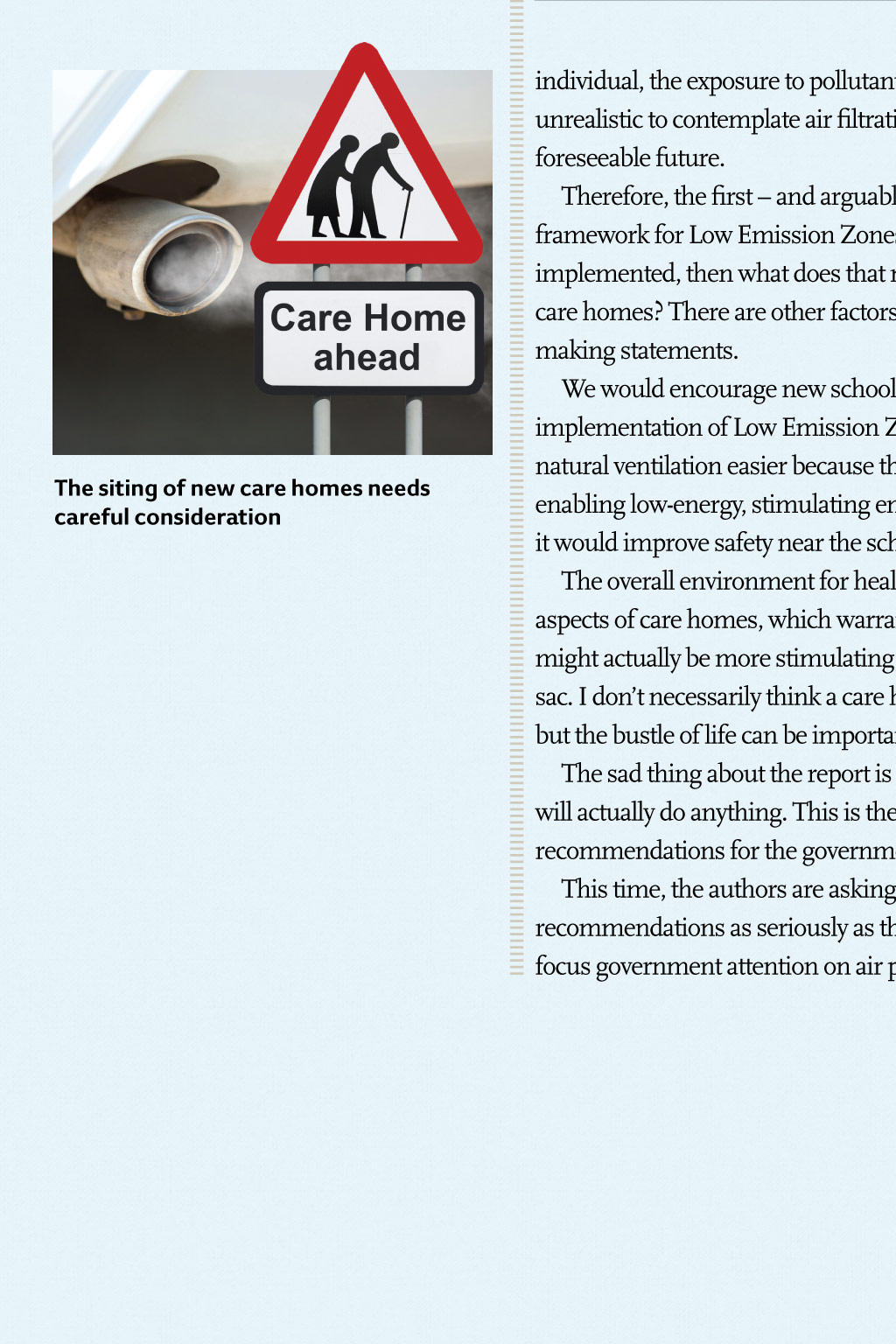








Opinion protecting the vulnerable in our toxic towns Following the release of the Action on Air Quality report, Shaun Fitzgerald discusses the implications of its recommendations for schools, care homes and health clinics Shaun Fitzgerald FCIBSE is chief executive of Breathing Buildings Web: www.breathingbuildings.com @breathingbuild Twitter: This is the third report on air quality in five years. The main recommendations for the government in 2010 and 2011 were not implemented The siting of new care homes needs careful consideration On 8 December 2014 the House of Commons Environmental Audit Committee published its report Action on Air Quality, prompting a host of headlines in the UK press. The report recommended that new schools, care homes and health clinics should be built away from pollution blackspots, and that any redevelopment of such existing buildings should only be approved if it reduces pollution exposure for the users. The report also suggested that schools already sited near pollution hotspots should be fitted with air filtration systems. However, there are other recommendations that are potentially more powerful. The first states that government should, without any further delay, introduce a national framework for Low Emission Zones, with common metrics and a national certification scheme for vehicles meeting particular air quality standards, to facilitate their widespread adoption. The gravity of this recommendation is worth reflecting on. Fundamentally, occupants of schools and health clinics typically spend less than a third of their day in these buildings. Therefore, if one considers the overall health impact on an individual, the exposure to pollutants at other times of the day needs to be considered. It is unrealistic to contemplate air filtration systems for all domestic dwellings in a city in the foreseeable future. Therefore, the first and arguably the most important recommendation on the framework for Low Emission Zones is key to the improvement of health. If it is implemented, then what does that mean for the location of schools, health clinics and care homes? There are other factors worth considering before reaching conclusions and making statements. We would encourage new schools to be built away from busy roads even with the implementation of Low Emission Zones and new standards on air quality. It would make natural ventilation easier because the immediate outside noise levels would be lower, enabling low-energy, stimulating environments to be accessed by more children. Crucially, it would improve safety near the school. The overall environment for health clinics would also be improved. However, there are aspects of care homes, which warrant further thought. Siting one in a busy environment might actually be more stimulating for residents than one hidden away in a quiet cul-desac. I dont necessarily think a care home overlooking a concrete underpass would be ideal, but the bustle of life can be important. The sad thing about the report is that questions remain about whether the government will actually do anything. This is the third report on air quality in five years. The main recommendations for the government in 2010 and 2011 were not implemented. This time, the authors are asking ministers to take the situation and their recommendations as seriously as they do. It should not need a European court case to focus government attention on air pollution.